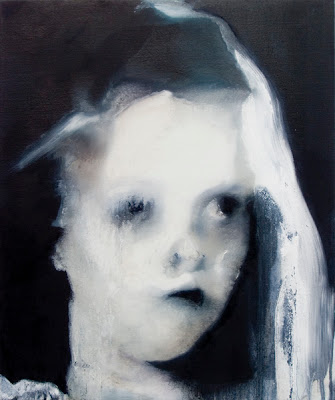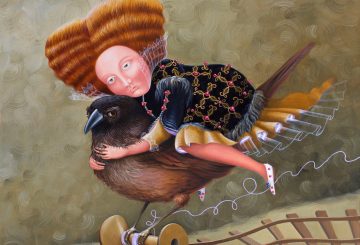The end must have really been something to see. Right on the edge of real radical political change, the period from ‘67 to ‘72 was a period of world wide dissent and ferment. Paris, sure, beneath the streets the beach and all that, but Mexico, Brazil and Japan too. It was a global resistance to the forces at the frozen heart of Cold War politics. In that bygone era lines of communication were incredibly slow and the local versions of international radical politics and art that suddenly sprang up couldn’t’t be ignored. Small cultural moments such as a protest rally, a song, a film, a stage play or a magazine had an effect far beyond their physical limitations. Culture was important and independent of the forms that delivered it. A magazine might be sold for profit but that wasn’t its motivation, and it might have had only 1,000 copies printed, but each one had such importance that it was valued beyond mere newsprint.

Reuben Keehan, A Farewell to Photography. Installation view.
Courtesy Sarah Cottier Gallery.
When the Cold War melted and consumers were pacified with better products and fewer options, the ferment turned to soda. The 68-72 period formed a kind of cultural bedrock on which the Marxist late 70s, the Post Modern Period, and Hyper Capitalist Now, would be built. The collateral cultural – the books, the magazines, the movies -took on fetish qualities for the survivors and everyone else who followed, some, like us, people who were taught by comrades, and for others, the students of students of students. And that’s where Rueben Keehan comes in.
His debut solo show with Sarah Cottier Gallery is called A Farewell to Photography, a series of paintings memorializing long lost detritus from the Golden Age. Provoke was published in Japan from late 1968, a magazine dedicated to radicalizing the practice of photography not just in its subject matter – down and outs, underground culture– but also in its approach using distressed, torn and overexposed images. Perversely perhaps, the magazine cover didn’t actually feature photographs, just an artfully designed masthead in English, a line of explanatory text in Japanese and an issue number.
Reuben Keehan, Autumn 1968, 2007.
Acrylic on canvas, 91x91cms. Courtesy Sarah Cottier Gallery.
Keehan’s work is also an act of perversity taking such an obscure starting point for what is essentially a homage to a lost of era. The title of the show makes the relationship between the object, the painting, and the source – an imageless image source – an ironic launch pad for unhealthy obsession between object-subject relationships. The paintings are beautifully done and reinforce the homage element to the point of emotional piquancy. The other unsettling element to this series of works isn’t all that apparent, and certainly not so when viewed in an opening crowded with well wishers and nouveau pioneers. And that’s silence. When you look at these paintings it feels like the world is crashing down in slow motion. A silent end that never stops ending.
A similar kind of silence can be found in Nigel Milsom’s work in his show with Chris Hanrahan called Living On Luck at the National Art School. The silence in Milsom’s paintings may be because, like Keehan, he’s also using photography as a starting point. Milsom was looking at the work of Disfarmer [1884-1955], a self-taught photographer who did portraits of neighbours, towns folk and passersby in Herber Springs, Arkansas during the early 20th century.

Nigel Milsom, Untitled (spirit ditch), 2007.
Oil on Linen, 50 x 60cm. Private collection.
Courtesy of the artist.
Milsom has taken on Disfarmer’s front-on, photo portrait style and created a stunning series of paintings. Like his last show at Firstdraft, Milsom’s used a multiple approach to laying out the equally-sized images end to end as a continuous line around the walls. But where the experiment at Firstdraft didn’t really work, the collection of images that Milsom has painted here, from self portraits to images of weird and anonymous ‘70s people and Charles Bronson look-a-likes, the paintings are eerie and as silent as the tomb. Maybe it’s all the black he’s used?
Living On Luck is a two-fer show, a dialogue between two artists – Milsom the painter, and Hanrahan, a guy who does a lot of things. Hanrahan is a former student at the National Art School, the publicity is at pains to point out, as if this scruffy contemporary artist may embarrass and frighten the venerable school’s more conservative staff or students. One can only imagine what his former NAS lecturers would have had to say about the things he got up to at Gallery Wren, smashing holes in walls, jumping into swimming pools, playing the intro to the theme from Hogan’s Heroes on the kazoo.
The NAS staff shouldn’t have worried as Hanrahan’s work has never really strayed far from classic sculpture ideas – form, space, material. It’s true, Hanrahan also lays the soft velvet of self portraiture over the top of the objects, but if you just walk around and luxuriate in the artist’s love of wood, there’s enough aesthetic and intellectual egg nog to keep you going all day long.
For Living On Luck
Hanrahan has tapped into the a la mode style for constructing a little house in the middle of a bigger space, but he’s built a shack in which one might view the artist singing country and western songs, drawings tacked up on the walls, the whole deal surrounded by smaller sculptures rather like stretchers propped up on lighting fixtures. It may well be al la mode, but it works. Harahan’s love of the absurdity of language frames the discourse, substituting song lyrics and Hank Williams crooning for confessional. We have always been attracted to the way Harahan uses objects as language, the use of text, writing and drawing finding parallels in the objects themselves, as though the three-dimensional pieces were derived from Pictionary clues.
This show is promoted as a dialogue between the artists, an exhibition that “examines conventions of portraiture and considers the complex mechanisms through which our personal and public identities [are] constructed.” We’re not sure if this show really does that, but what we can definitely vouch for is it demonstrates the way seemingly opposite practices are complimentary. Not only that but out there, beyond the high walls of any given educational institution, the borders between practices start to dissolve seconds after graduation.

